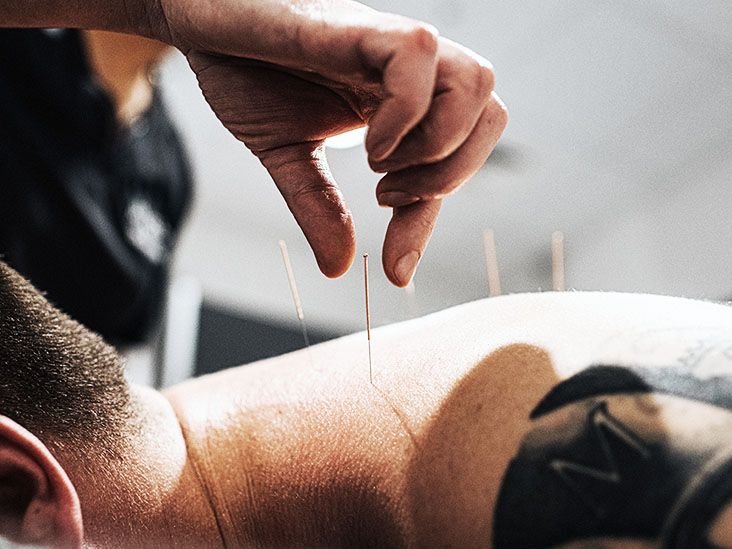Acupuncture can help relieve pain and treat a variety of other conditions. However, exactly how it works remains unclear. Some people believe that it helps by balancing the vital energy, while others believe that it has a neurological effect.
acupuncture
This article details what acupuncture is, how it works, and what are the benefits and risks of acupuncture.
Acupuncture involves inserting needles into the body to stimulate sensory nerves in the skin and muscles.this
Acupuncture has its roots in Traditional Chinese Medicine (TCM) and is now
TCM explains that health is the result of a harmonious balance of the complementary extremes of Yin and Yang of the life force known as Qi (pronounced “chee”). Proponents believe that disease is the result of an imbalance of these forces.
According to TCM, Qi flows through the meridians, or channels, of the human body. These meridians and energy flows can be accessed through 361 acupuncture points within the body. Inserting needles into these points in the right combination will restore balance to the energy flow.
A 2017 review suggests that many acupuncture points are located at sites where stimulation can affect the activity of multiple sensory neurons. These areas are also known as receptive fields.
The physical stimulation of needle insertion into these areas can affect pain processing in the central nervous system and muscles and increase blood flow to certain parts of the body.
a
All treatments come with both risks and benefits. You should always seek medical advice before undergoing treatment.
Possible risks of acupuncture include:
- Bleeding, bruising, and pain may occur at the insertion site.
- Unsterilized needles can cause infection.
- In rare cases, the needle may break and cause damage to internal organs.
The Food and Drug Administration (FDA) regulates acupuncture as a medical device. Their manufacture and labeling must meet certain standards. Needles must be sterile, non-toxic, and labeled “single use only” by a qualified physician.
As with other complementary therapies, we recommend using: For chronic or severe conditions, acupuncture is used alongside conventional treatment.
Acupuncture is a common complementary therapy that helps manage a variety of conditions.
Benefits of acupuncture include:
- Acupuncture can be effectively combined with other treatments.
- Effective acupuncture can help manage symptoms
chronic pain migraine, headache. - Acupuncture has a low risk of side effects.
- This is a flexible treatment that can address numerous health concerns at once.
of
The acupuncturist examines the patient, assesses the condition, inserts one or more thin, sterile needles, and provides advice.
You will usually sit or lie down during the procedure. Acupuncturists must use disposable, sterile needles. When the needle is inserted, you may feel a very brief stinging or stinging sensation.
Afterwards, you may feel a dull pain at the base of the needle.
The needle is typically left in place for 20 to 60 minutes, depending on the procedure.
In some treatments, the acupuncturist will:
The number of treatments required depends on each individual case. If you have a chronic illness, he may require treatment once or twice a week for several months. Acute health problems usually improve after 8 to 12 sessions.
Acupuncture is a complementary therapy and is not meant to replace treatments recommended by your doctor.
You should seek the advice of your GP before undergoing acupuncture to treat chronic pain or other conditions. In some states in the United States, acupuncturists themselves can be primary care physicians.
Acupuncture is a traditional complementary therapy with historical origins in China. This involves inserting small needles to stimulate specific parts of the body and its nerve networks.
Studies have shown that acupuncture can help manage chronic pain, OA, headaches, and migraines.
Acupuncture has little risk of side effects, and practitioners must carry a license to perform acupuncture.

